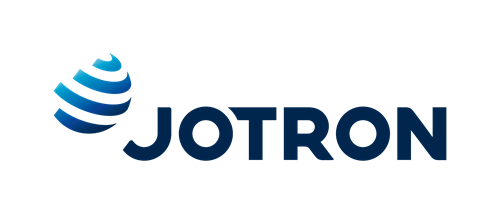ENAV’s Board of Directors approves the Preliminary Results at December 31, 2017 and the 2018 – 2022 Business Plan

The Board of Directors of ENAV S.p.A., held today, under the chairmanship of Mr. Roberto Scaramella, approved the stand-alone Financial Statements of the Company and the Consolidated Financial Statements of the Group at December 31, 2017, the 2018 – 2022 Business Plan and the 2017 Consolidated Non-Financial Statement.
The CEO Roberta Neri declared: Our 2017 results went beyond expectations. ENAV’s new operating procedures, such as Free Route, combined with quality of service delivered, allowed us to capture a significant number of air routes and to increase our revenues. The focus on cost efficiency and an optimum use of our people contributed to further improve our overall financial performance. Looking ahead, we believe that the new organizational model outlined in our Business Plan will provide significant momentum to the Italian air transport system, with clear benefits in terms performance, productivity and competitiveness. The introduction of new technologies will also further increase the professional service of our operational staff and provide professional growth and new career opportunities.
To read the full report click here.
ENAV’s Board of Directors approves the 2018-2022 Business Plan
An agile and future-proof operating model leveraging on technological innovation
The ENAV SpA Board of Directors met today under the chairmanship of Roberto Scaramella and approved the 2018-2022 Business Plan developed with the objective of responding proactively to the future needs of the increasingly dynamic national and international air traffic control sector and related services.
The Business Plan represents an extraordinary technological and operational development of strategic importance for the Company, that will enable ENAV to manage air traffic with a new organisational model that improves performance, productivity and competitiveness while ensuring maximum safety levels. The Company will benefit from a simplified organisation and from more agile processes, which will facilitate the professional development of its resources and allow a more effective planning of operating costs and long-term investments.
The 2018-2022 Business Plan, built around the regulatory context defined by the Single European Sky, will have a positive impact in terms of human capital value enhancement and in terms of medium- to long-term economic and financial growth, enabling ENAV consolidate its leadership position, with respect to other European service providers, in the technological evolution of Air Traffic Management.
The 2018-2022 Business Plan is built on three main areas:
1) A new agile and flexible operating model, to increase productivity, competitiveness and optimise costs.
The Business Plan has the overall objective of maintaining ENAV’s focus on its core business and on its customers, leveraging on technological innovation and on an agile and flexible organization, capable of responding rapidly to the new and changing requirements of its stakeholders.
ENAV currently manages air traffic in Italy from 4 area control centres (Rome, Milan, Padua and Brindisi), which assist aircraft in the en-route phase, and from 45 control towers in as many airports, which provide assistance in the phases of take-off, landing and taxiing. Lastly, the radar stations that are responsible for the approach phases are currently located in a number of control towers and in the 4 area control centres.
The new operating model outlined in the Business Plan envisages the consolidation, at regime, of the 4 area control centres into two ACCs, in Rome and in Milan. By 2022, the area control centres in Rome and Milan, which already handle the approach for the main airports, will absorb the activities of the remaining approach stations located on the control towers.
The area control centres of Brindisi, gradually until 2022, and over the subsequent five years Padua will be at the heart of an important technological and industrial transformation, with their gradual reconfiguration into two remote tower hubs that will progressively manage the traffic, and other main activities, on a number airports from a distance, as well as the development of the respective technologies.
The new operating model will also enable the centralization of the maintenance and monitoring activities, thereby minimizing costs and response time and increasing productivity.
In terms of human resources, there will be a gradual optimisation of the workforce, in line with international best practices, and a more balanced distribution of workloads on all operating structures, without having to resort to layoffs, but rather through an active policy of natural attrition management, over the business plan period, and incentives. New resources will be gradually hired to partially replace those employees who will have reached retirement age or whose controller licences have expired due to the age limit. The introduction of new technologies will also enhance the professional development of air-traffic controllers and increase the engagement of personnel in the pursuit of the new operational and technical challenges. To achieve this target, the Company plans to dedicate resources to personnel education and training, to satisfy the new professional competences required.
2) Reinforce ENAV’s leadership position by developing future air traffic control platforms
In line with the technological evolution of the sector, ENAV has developed a technical-operational roadmap with the objective of consolidating its international competitiveness and its leadership in technological innovation, in line with the Single European Sky requirements. The Business Plan foresees an investment in technological platforms for air traffic control of over 500 million euro over the five year period, with a view to ensuring maximum performance while maintaining maximum safety levels. The main systems include:
- Data Link, which allows ground/air/ground communications via a data connection without needing to resort to voice communications via radio, will be deployed in all area control centres;
- The MTCD system (Medium Term Conflict Detection), will support the air traffic controller in the detection of possible traffic conflicts with a significant lead time in order to enable a timely route re-planning;
- The new FDP system (Flight Data Processor), which will be the future operating platform, will be implemented with a new approach in terms of development and maintenance;
- The development of new E-Net 2 network, a Full IP Multiprotocol Label Switching operational network, that will significantly reduce our costs while increasing by 10 to 100 times the bandwidth available on the various sites effectively enabling remote tower operations.
3) Continue to grow in non-regulated business, both in Italy and abroad.
ENAV aims to expand its activities in the non-regulated market by consolidating its presence in 29 countries where it has acquired contracts and evaluating potential opportunities for growth via M&A.
Within the non-regulated activities of ENAV, an important role is played by the satellite surveillance platform of Aireon, in which ENAV will hold, at regime, a 12.5% stake thanks to an investment of US$ 61 million. The platform will be operational at the beginning of 2019, and is the only surveillance system in the world offering 100% global coverage (current traditional surveillance systems cover only 30% of global airspace). Aireon represents a financial investment for ENAV for which it expects to receive the first dividends starting from 2021, guaranteeing an IRR of more than 10%.
In addition, ENAV will position itself as the reference operator for the development of the Unmanned Aerial Vehicles (UAV, or drones) market, which is still in an embryonic phase, but with significant potential, allowing the use of these vehicles for a growing number of public services, while ensuring higher safety levels. The Company has therefore initiated the selection process for an industrial partner with which it will set-up a NewCo, in which ENAV will have a 60% stake, that will develop a specific air traffic management model for Unmanned Aerial Vehicles (UAV) offering services to users for which it will charge a tariff. In compliance with the provisions included in the Convention signed with the national regulator (ENAC), ENAV is in charge of managing the coexistence of conventional air traffic and drones ensuring the safety of the airspace.
Financial Targets
Over the next five years ENAV will invest a total of 650 million euro, internally funded, aimed at the development and implementation of new technological platforms, the education and training of its own personnel and the modernisation and transformation of certain infrastructure required for the transition to the new operating model, including the beginning of the works for the new area control centre in Milan, the gradual reconversion of the ACCs in Brindisi, and subsequently in Padua, into remote tower hubs and the deployment of the remote towers at certain airports.
Over the period 2018-2022, net revenues are expected to grow annually "low single-digit"; the revenue from non-regulated activities is expected to reach approximately 35 million euro in 2022 also thanks to the UAV traffic management opportunity, with an annual growth rate of over 20%.
The Company forecasts a cost development over the period 2018-2022 no higher than the rate of inflation, such that EBIT margin will reach 17-18% in 2022.
Lastly, in the period 2018-2022 the Company expects to propose an annual dividend growth of 4%, starting from the 2018 dividend of 101 million euro.
Disclaimer
This document contains certain forward-looking statements that reflect the Company’s management’s current views with respect to future events and financial and operational performance of the ENAV Group. These forward-looking statements are based on ENAV’s current expectations and projections about future events. Because these forward-looking statements are subject to risks and uncertainties, actual future results or performance may differ materially from those expressed in or implied by these statements due to any number of different factors, many of which are beyond the ability of ENAV to control or estimate precisely, including changes in the regulatory environment, future market developments, and other risks. You are cautioned not to place undue reliance on the forward-looking statements contained herein, which are made only as of the date of this document. ENAV does not undertake any obligation to publicly release any updates or revisions to any forward-looking statements to reflect events or circumstances after the date of this document.


.jpg)
.png)





Comments
There are no comments yet for this item
Join the discussion